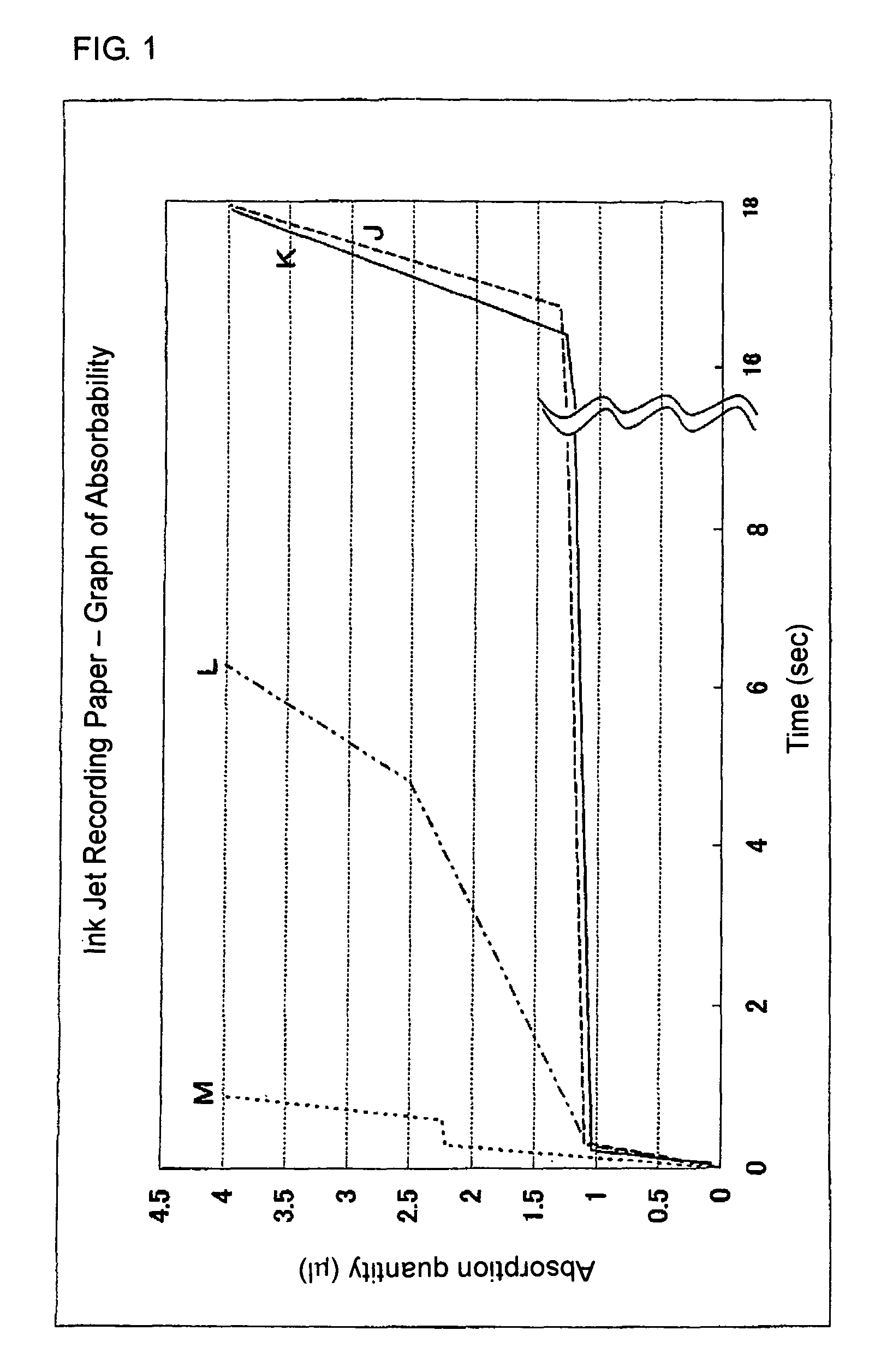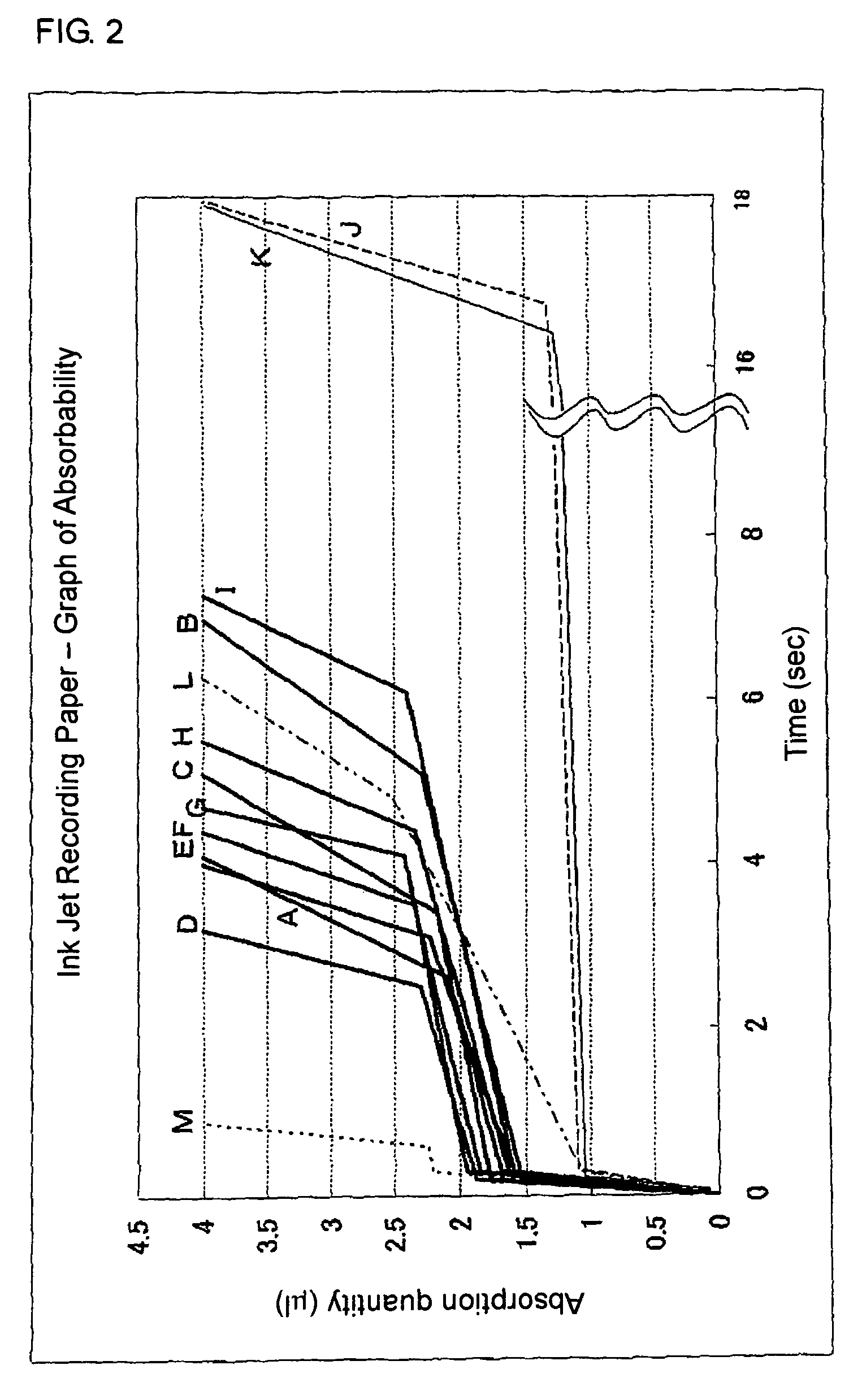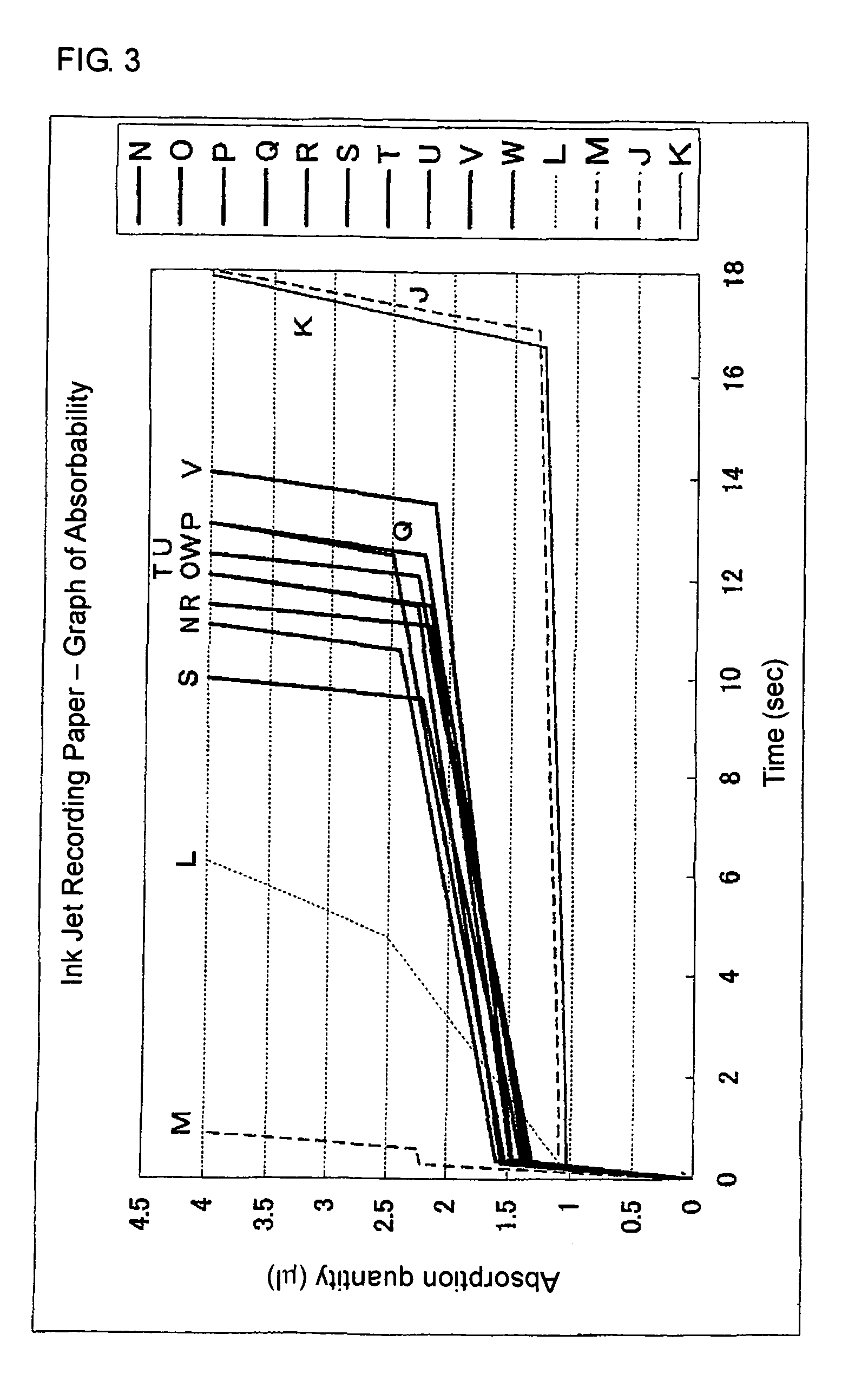Recording medium for water-based ink and method for determining ink absorbing characteristic thereof
a technology of water-based ink and recording medium, which is applied in the direction of duplication/marking methods, thermography, coatings, etc., can solve the problems of difficult to recognize the relationship qualitatively or quantitatively, and the behavior of pure water is impossible to be clear, so as to improve the image density and in a blotting suppressing action, the effect of minimizing blotting
- Summary
- Abstract
- Description
- Claims
- Application Information
AI Technical Summary
Benefits of technology
Problems solved by technology
Method used
Image
Examples
example 1
[Paper Base I]
[0140]10 parts of calcined kaolin was added to 100 parts of hard wood bleached kraft paper (freeness 400 ml, CSF: JIS-P-8121), further added were 1.0 part of cation starch, 0.7 part of a rosin size and 2.0 parts of alum cake, followed by mixing to a thorough extent to prepare a raw material for paper making. Then, using a Fourdrinier multi-cylinder type paper machine, paper making was performed, followed by drying to a water content 10%. Then, with a size press, a 7% aqueous solution of oxidized starch was applied 4 g / m2 to both paper surfaces, followed by drying to a water content of 5.0%, thereby affording a paper base I having a weight of 190 g / m2 and a Stöckigt sizing degree of 15 seconds.
[Preparing a Coating Solution for an Ink Receptive Layer]
[0141]100 parts of silica resulting from treating wet process silica (trade name: NIPGEL AY603, a product TOSOH SILICA Co.) as a pigment to a weight average secondary particle diameter of 6.6 μm and to 47% of the total silic...
example 2
[0144]A recording medium for water-based ink was produced in the same way as in Example 1 except that the external size in the paper base I prepared in Example 1 was changed to oxidized starch:PVA:styrene-acrylic resin=4: 0.5:0.5 (5% solution) and that the Stöckigt sizing degree was changed to 50 seconds.
[0145]The foregoing various evaluations were made with respect to the recording medium for water-based ink thus produced, the results of which are shown in Table 2. Absorbing speed, absorbing time and absorption quantity in each absorbing stage of the recording medium are in such a relation as indicated by the reference mark B in Table 1 and FIG. 2.
example 3
[0146]A recording medium for water-based ink was produced in the same way as in Example 1 except that the pigment contained in the ink receptive layer coating solution was changed to silica resulting from pulverizing wet process silica to a weight average secondary particle diameter of 7.0 μm and to 20% of he total silica quantity in the number of particles having a weight average secondary particle diameter of not larger than 2 μm by means of a sand mill and subsequent classification.
[0147]The foregoing evaluations were made with respect to the recording medium for water-based ink thus produced, the results of which are shown in Table 2. Absorbing speed, absorbing time and absorption quantity in each absorbing stage of the recording medium are in such a relation as indicated by the reference mark C in Table 1 and FIG. 2.
PUM
| Property | Measurement | Unit |
|---|---|---|
| thickness | aaaaa | aaaaa |
| thickness | aaaaa | aaaaa |
| time | aaaaa | aaaaa |
Abstract
Description
Claims
Application Information
 Login to View More
Login to View More - R&D
- Intellectual Property
- Life Sciences
- Materials
- Tech Scout
- Unparalleled Data Quality
- Higher Quality Content
- 60% Fewer Hallucinations
Browse by: Latest US Patents, China's latest patents, Technical Efficacy Thesaurus, Application Domain, Technology Topic, Popular Technical Reports.
© 2025 PatSnap. All rights reserved.Legal|Privacy policy|Modern Slavery Act Transparency Statement|Sitemap|About US| Contact US: help@patsnap.com



